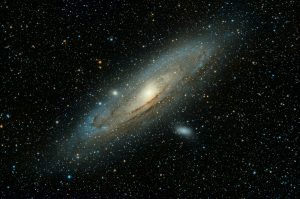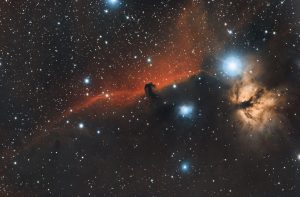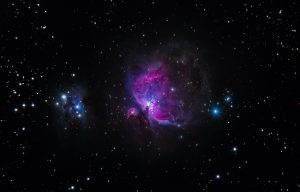THE discovery of a “rare” planet has been announced by researchers from the University of St Andrews.
The discovery, which was published yesterday in ‘Nature Astronomy’, was found by a team of researchers led by the University of Liège in Belgium, including astrophysicists from the University of St Andrews.
These new findings are one of the first of its kind from the European Space Agency’s Cheops and marks the first time a planet out with the solar system with an orbit of more than 100 days has been spotted.

These findings are the first of its kind.
The Cheops satellite surprisingly spotted the system’s planet, known as Nu2 Lupi d crossing the face of a star that was bright enough to be visible to the naked eye.
The host star, known as Nu2 Lui is a bright sun-like star that is located less than 50 light-years from Earth in the constellation of Lupus.
Co-author Dr Thomas Wilson, research fellow in the Centre for Exoplanet Science in the School of Physics and Astronomy at the University of St Andrews, said: “The discovery that Nu2 Lupi d is transiting was surprising as the chance to see a planet transit at this large a distance from their host star is very low.
“If placed in our Solar System, Nu2 Lupi d would orbit between Mercury and Venus and so the planet receives a very low amount of starlight compared to the majority of discovered exoplanets.
“The brightness of the star and low distance to the planetary system from Earth (only 50 light-years), means that Nu2 Lupi d is now a unique target for further study using the NASA/ESA Hubble Space Telescope or forthcoming NASA/ESA/CSA James Webb Space Telescope.”

The researchers surprisingly spotted the system’s planet.
The discovery has enabled researchers to suspect that the planet is around 2.5 times the radius of Earth but has a mass of 8.8 times of Earth.
Lead author Dr Laetitia Delrez, of the University of Liège, Belgium, said:
“Transiting systems such as Nu2 Lupi are of paramount importance in our understanding of how planets form and evolve, as we can compare several planets around the same bright star in detail.
“We set out to build on previous studies of Nu2 Lupi and observe planets b and c crossing the face of Nu2 Lupi with Cheops, but during a transit of planet c we spotted something amazing: an unexpected transit by planet ‘d’, which lies further out in the system.”

The new discovery has allowed researchers to estimate that the new planet is is around 2.5 times the radius of Earth.
The transiting planet blocks are small but there is a detectable proportion of its star’s light as it crosses in front of it which creates an opportunity to study a planet’s orbit, size, atmosphere, and interior.
This allowed researchers to determine the densities and possible compositions of the three planets, they found that planet b is mostly rock whereas planets c and d appear to contain large amounts of water along with hydrogen and helium gas.

